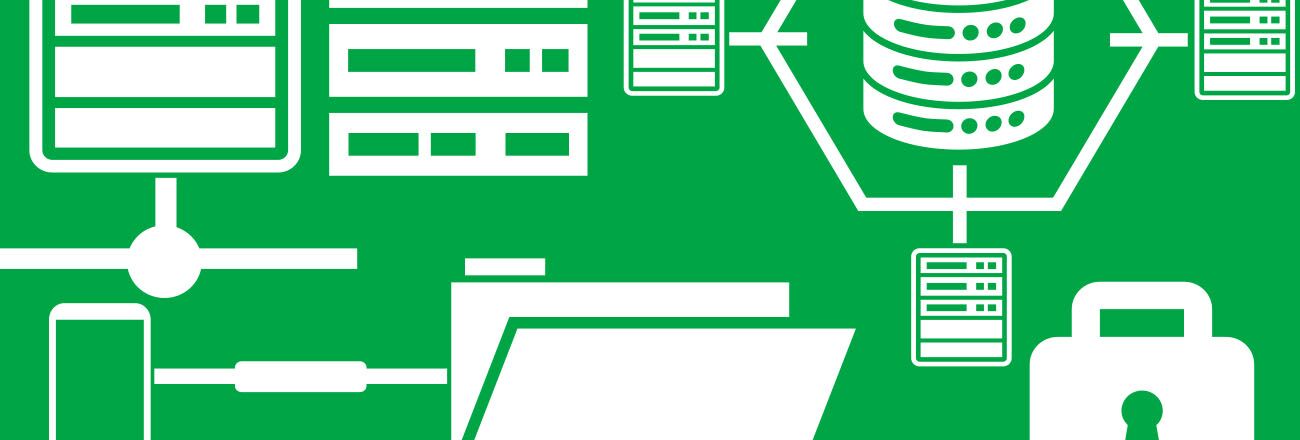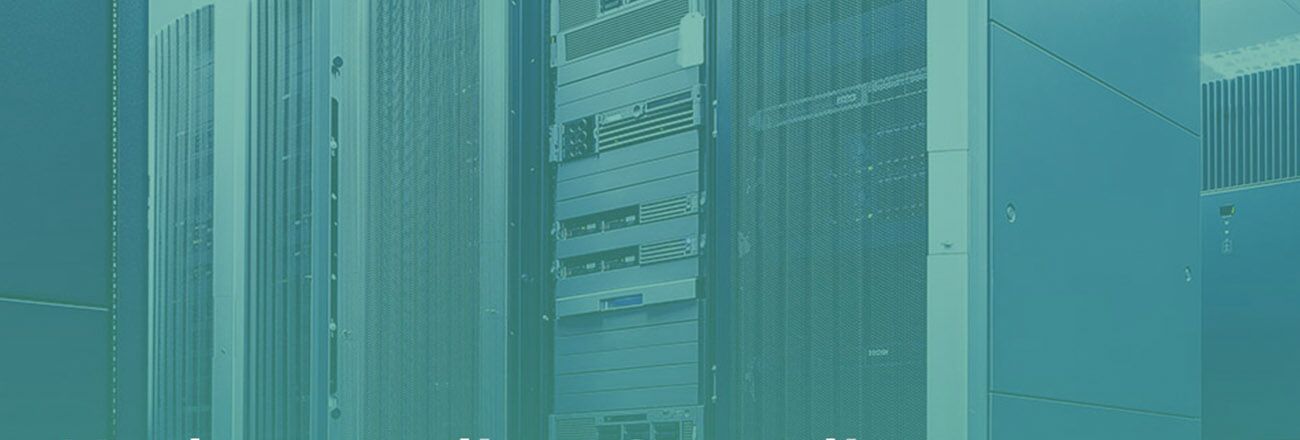Month: May 2017

Dedicated hosting provides full access to server resources (CPU, Memory, Disk Space) dedicated to a single customer for use as needed. Dedicated hosting is considered single-tenant, meaning one owner or administrator controls the entire server and its resources.
What are the benefits of dedicated hosting?
There are many benefits to dedicated hosting but, like all things, the benefits are relative to the use case and the needs of the person or business using the service. Some of the benefits are on-demand deployments, single-tenancy, consistent performance, security and compliance, and customization. .
On-demand deployments:Dedicated servers can be deployed, in many cases, in a matter of minutes or hours. SingleHop, an INAP company, was the first provider to automate the deployment of bare metal servers in 2006, and many other providers have since followed suit. If traffic to your website happens to increase dramatically, you can quickly deploy additional dedicated servers through a self-serve portal or by submitting a request to the server hosting provider. The process of on-demand deployments reduces the friction between customer needs and the fulfillment of those needs.
Single-tenancy: This means that the dedicated server is used by only one customer that has full access to all resources on the hardware to manage as they please. This is a great option for high input/output intensive applications that demand consistently high performance such as voice (VOIP) and gaming services.
Consistent Performance: Because of the single-tenant nature of dedicated hosting and the direct access to the hardware resources such as CPU, memory, and disk, applications can count on a high performance and consistent experience. . There are still potential bottlenecks to consider, but they are more directly in your control because you have direct access to all the hardware resources.
Security and Compliance: The inherent security that comes with dedicated hosting is due to the single-tenant nature of this deployment model. By now, you’re probably seeing a theme with this. However, multi-tenant architectures have become substantially more secure over the last five years. That being said, use cases that are highly dependant on stringent security and compliance tend to favor the peace of mind that dedicated hosting environments bring.
Customization: Dedicated hosting is highly customizable, allowing you to choose how much and what type of CPU, memory, and storage you need. Most dedicated hosting providers will advertise standard options, but then give you the option to customize to the specific needs of your application workloads. If you need to upgrade or downgrade after the initial setup, you also have this option. This flexibility in customization allows you to control for changing application performance requirements over time.
What are the drawbacks of dedicated hosting?
While dedicated hosting is great for many applications and workloads, there can be drawbacks if not set up properly or the needs of the application are not thoroughly vetted prior to selecting dedicated hosting as the best solution. Some of those drawbacks include fault tolerance and scalability.
Fault tolerance: Yes, you can set dedicated hosting up in a way that allows you to achieve fault tolerance; however, this is not an out-of-the-box solution. Take, for example, a single dedicated server. Inside that dedicated server you can configure your hard drives in a RAID set-up to minimize the risk of losing data if one or more drives fail. However, this is the bare minimum. But what if another critical component dies? The risk of downtime is much greater if you are running on a single server. Unlike cloud solutions, dedicated hosting does not have the built-in fault tolerance attributes that substantially reduce the risk of unplanned downtime.
Scalability: Earlier I mentioned on-demand deployment as one of the benefits for dedicated hosting. If that’s the case, why is scalability a potential drawback? The answer relates back to built-in features vs. features of capabilities that take more work to set up. With dedicated hosting, you can have servers deployed in 60 minutes.. With a cloud solution, you can instantly deploy new virtual machines if the need arises. You can even automate this process based on triggers from APIs that tie into your applications. Workload spikes, spin up a new vm. This attribute is not as prevalent with dedicated servers. For applications with highly variable workloads — web or mobile applications, for instance — that hour is a make or break difference, placing dedicated hosting at a distinct disadvantage.
What can dedicated hosting be used for?
There are many use cases that are perfect for dedicated hosting, but I will focus on just a few of them, such as gaming, VOIP, shared hosting and VPS hosting.
Online Gaming: If you’ve ever played games online, you know that even the slightest bit of lag in the gaming experience can completely ruin a good time (or infuriatingly spoil an imminent multiplayer victory). That lag some gamers experience is caused by bottlenecks within the environment the game is hosted. These bottlenecks could be CPU related, memory, or network related. Dedicated hosting is usually a better choice for handling the first two potential bottlenecks. For games that require a lot of CPU-intensive throughput, dedicated hosting is ideal.
VOIP: Voice Over IP services are also input/output intensive and require direct access to hardware resources. Again, dedicated hosting limits the chances of some of the bottlenecks that could cause poor voice quality to the end users of the VOIP service.
Shared Hosting and VPS Hosting: Think of shared and VPS hosting as apartments or condos inside of the larger building. Dedicated hosting is the larger building and then shared and VPS hosting accounts are the smaller structures within. The reason this use case makes a lot of sense is because the resources that are divided up for the smaller accounts can be more directly tied to the underlying hardware, whereas in a cloud hosting environment there is another layer between the two (the hypervisor) that can cause performance degradation. Most shared hosting providers are simply renting dedicated servers and then slicing those up into hundreds or thousands of shared accounts.
How is dedicated hosting different from cloud hosting?
Dedicated hosting is different from cloud hosting primarily due to the single-tenant nature of dedicated hosting. There is no one size fits all hosting solution, so paying careful attention to the needs of your applications is the most important thing when deciding to go cloud over dedicated hosting. If your business fits into one of the use cases above, or something similar, dedicated hosting could be a great fit. If you’re still not sure, contact one of our dedicated and cloud hosting consultants and we’ll be happy to guide you in the right direction.
What to consider when evaluating dedicated hosting providers?
There are a few key dimensions to consider well before choosing a dedicated hosting provider, and those include reputation and reliability, choice in hardware, SLAs and overall value.
Reputation and reliability: Do your diligence up front. Talk to others that may have had experience with a particular provider or providers. Read reviews online. Reach out to their sales and support teams to see how they respond. Get a good sense of whether or not the provider is reputable and will take care of your needs once you become a paying customer. Beyond that, making sure the provider has a reputation for being reliable in terms of uptime and support is critical. Some providers offer visibility into uptime and support metrics on their websites, so be sure to take a look at those and ask questions if anything raises a red flag. In some cases, it’s not necessarily that a provider has had issues in the past (every provider in the history of the internet experienced downtime), but how they’ve responded to and resolved issues.
Choice in hardware: One of the many benefits of dedicated hosting is the ability to choose and customize your hardware components. Make sure you’re able to customize to your needs and that the dedicated hosting provider has sufficient inventory to support them needs as your business grows.
Service Level Agreements (SLAs): The reality in technology is that things will go wrong at some point. It’s not a matter of if, but when. Finding a dedicated hosting provider with easy to understand and generous SLAs is important. SLAs are basically the up-front promise the provider is making about the quality of their service. If they fail to meet those quality standards then they will credit you back for services you paid for. Always be sure to review the provider’s SLAs and make sure they are easy to understand and that the credit schedules seem reasonable based on the dimension of service they are related to.
Overall Value: There’s no magic formula for calculating value, but the general question to answer is whether or not the reliability, features, support and performance you are getting for the price you are paying is reasonable. If you’re paying out the nose for a service that has regular downtime, slow support response times, and weak SLAs, then you’re probably not getting a great value. On the flip side, if the service is a little more expensive but you simply never have to worry about it, maybe it’s worth it. That is for you to decide, and often comes down to the criticality of your workloads and applications.
How much does dedicated hosting cost?
Dedicated hosting typically starts in the low $100 per month range for enterprise-grade hardware and service, and can go up to thousands of dollars per month for a single server with premium components. The range is wide and highly dependent on the needs of the applications running in the environments.
Updated: January 2019
Explore HorizonIQ
Bare Metal
LEARN MORE
Stay Connected

Business continuity is an organization’s ability to ensure operations and core business functions are not severely impacted by a disaster or unplanned incident that takes critical systems offline. Business continuity planning is the interdepartmental process, often led by information technology, of implementing the tactics used to restore normal business in a set amount of time, define the amount of data loss acceptable to the business, and communicate critical information to organizational stakeholders during and following incidents.
Implementing redundant IT infrastructure and contingency plans was once prohibitively expensive for all but the largest of organizations, but new economical, on-demand cloud technologies are putting robust business continuity strategies within reach for millions of businesses.
Common technology services designed for business continuity consist of cloud data backups, cloud-based disaster recovery as a service (DRaaS) for infrastructure outages, and managed security plans that protect against increasingly sophisticated cyberattacks.
What are the consequences of inadequate business continuity planning?
No one can predict when disaster will strike, but business continuity planning is the key to surviving major incidents. Disasters that cause business interruptions almost always negatively impact bottom lines, cooling down the steam that drives business in the digital economy.
This is especially true for businesses that generate revenue through web-based services. Consider this data:
- For larger enterprises, mere minutes of downtime can cost millions. In fact, the average annual cost for enterprises facing availability gaps (downtime and data loss) was $21.8 million, according to the 2017 Veeam Availability Report.
- In the same survey, 66 percent of companies expressed that downtime and data loss badly affect their digital transformation strategies and 40 percent noted downtime negatively affected their brand.
- According to the Ponemon Institute, every minute of downtime averaged $7,900 in revenue lost per minute.
What type of events does business continuity planning guard against?
A variety of events cause digital business disruptions. Just because you’re not at risk of one particular cataclysmic disaster doesn’t mean many other incidents can’t take you offline:
- Disasters: Natural and Local
Data loss and system failure can obviously be caused by natural disasters such as floods, earthquakes and fires, but even a simple electronic malfunction could destroy valuable information. When it comes to data, putting all your eggs in one basket is a perilous risk.
- Network Disruptions
Third-party internet networks can fail. Fiber can get cut. Your in-house local area network can be disabled. If your business needs continuous connectivity, make sure network availability is a top priority.
- Cybersecurity
The prevalence of cybersecurity threats is a global phenomenon that no business, large or small, can ignore. New threats such as Ransomware are predicted to be on the rise. Backing up your data with high frequency is crucial to ensuring such attacks don’t bring your business down plan against data breaches is paramount.
- Human error
Vulnerability points are often located right in the cubicle next to you. Employees or vendors can cause outages simply out of ignorance, due to innocent mistakes, or even as a result of ill intent.
Steps for Building and Executing Your Business Continuity Plan
If your business is behind in disaster planning, you don’t have to catch up alone.
Whether taking on business continuity planning alone or with a third party, follow these three steps to start protecting your company from unplanned downtime:
Step 1: Perform a Business Impact Analysis
A business impact analysis defines what data your company cannot live without and the amount of downtime acceptable in a given period of time. Finding a hosting provider that promises 100% uptime will help with this, but you’ll also need to determine two important numbers key to disaster recovery: Recovery Time Objective and Recovery Point Objective.
Step 2: Perform a Risk Assessment
This step is critical if you manage your own infrastructure. Risk assessments are all about identifying potential points of failure. For example, if you have your data stored in only one location and the location dies, you will lose your data. If a hosting provider is in charge of your servers and data within a data center, ideally you will have everything stored and replicated in more than one location. A service provider with a well-defined SLA will give additional confidence that your risk of downtime will be at a minimum.
Step 3: Manage Your Risks
Once you’ve assessed the risks, you must manage them—whether your data and infrastructure lives in house, with a hosting provider, or a combination of both. Regularly backup your data offsite as specified by your business continuity plan and go a step beyond by adding redundant, offsite infrastructure to your network to ensure 100 percent uptime.
Resources for Business Continuity Planning
- Learn how to convince your boss you need a DR Plan
- Design a backup policy tailored to your data storage needs
Explore HorizonIQ
Bare Metal
LEARN MORE
Stay Connected

Server hosting is an infrastructure delivery model that provides IT users with remote access to server resources (CPU, Memory, Disk, etc.) in order to power applications and store data without the hassle of buying, configuring and maintaining the server hardware themselves.
In this primer, I’ll cover the main benefits of this delivery model, detail the most common types of server hosting and touch on other frequently asked questions.
Why choose server hosting?
There are many benefits to server hosting, including, but not limited to, faster setup time, monthly payments instead of large capital expenditures, and ongoing upkeep so you can focus on your business as opposed to routine infrastructure maintenance.
1. Faster setup
The legacy process of ordering and shipping servers to your office or data center often takes weeks, if not months. In many cases, however, hosting providers can deploy, configure and make accessible servers for remote access within minutes of ordering. A reduction in deployment times means faster time to market for the businesses’ services..
2. Monthly payments
Server hosting allows you to avoid large capital expenditures for hardware that depreciates over time. Instead, you simply pay a monthly server hosting fee to access the resources remotely. The payments cover things like break-fixes and other important aspects of server hosting such as the space, power and cooling the server uses. The monthly payments also include bandwidth usage.
3. Ongoing upkeep
Server hosting also removes the burden of worrying about all the work that goes into just keeping servers up and running 24/7/365 — e.g. managing networks , power, cooling, security, hardware repairs,, software updates, etc. This gives IT users time to focus on projects that matter and not on the mundane task of keeping servers up and running.
What are the different types of server hosting?
There are many different types of server hosting delivery models that aim to help IT users and businesses achieve varying degrees of technical and financial results. Here are the most common:
Shared Hosting
Shared hosting is an inexpensive way to host simple, low traffic websites and blogs. Server resources are divided up into smaller shared hosting plans to give users an easy way to have a web presence. There can be hundreds or thousands of shared hosting accounts on a single server depending on how the hosting provider sets it up. Server resources are shared across all accounts.
VPS Hosting
VPS hosting is similar to shared hosting, but in this case server resources are dedicated to a particular account to minimize the risk of resource contention and degraded service for certain users. There are generally fewer VPS accounts on a single server than in shared hosting. As traffic and resource requirements grow, users tend to ‘graduate’ from shared hosting to VPS.
Dedicated Server Hosting
As the name suggests, dedicated server hosting provides the user with full access to all resources on single, dedicated server. There are no other customers on that server. There are many benefits to opting for dedicated server hosting such as full control over resources, enhanced security and root access. Dedicated server hosting is the next step up from VPS hosting, allowing customers to power mission-critical, resource-intensive applications.
Public Cloud Hosting
With the introduction of virtualization, public cloud hosting is most commonly associated with companies like Amazon Web Services (AWS), Microsoft Azure and Google Compute Cloud. In the simplest terms, public cloud hosting provides on-demand, self-serve access to compute and storage resources over the internet in a multitenant environment. Using virtualization technologies like VMware, Hyper-V, Xen, KVM, and others, public cloud hosting provides a scalable, redundant way to architect large hosting environments that can be scaled up or down on the fly.
Private Cloud Hosting
Like dedicated hosting, private cloud hosting dedicates all the server resources within the private cloud to a single customer. Think of a private cloud as a bunch of dedicated servers that are virtualized to give a large pool of resources that can be managed as needed. Private cloud includes all the benefits of a public cloud, like redundancy and self-serve access, but without the shared attributes of a multi-tenant environment. Hosted private cloud provides inherent security benefits since it is single-tenant and also removes the risk of noisy neighbor issues.
Hybrid Cloud Hosting
When complex, distributed applications and data require use of more than one hosting deployment model, hybrid hosting enter the landscape. This could be combining dedicated server hosting with public cloud hosting, or private cloud with public cloud hosting. Hybrid is simply the use of more than one delivery model to achieve businesses infrastructure goals in the most performant and cost efficient way.
Colocation
If you already own servers but need space, power and cooling to keep them up and running, colocation could be a good fit. Colocation offers greater perimeter security than most customers can achieve on their own, and is more reliable in terms of uptime since the data center provider should have strict requirements for power and cooling redundancy.
How do the different types of server hosting compare?
To help choose the right hosting model, here’s a quick comparison of the main types based on key factors:
|
Hosting Type |
Cost |
Performance |
Scalability |
Security |
Ideal For |
|---|---|---|---|---|---|
Shared Hosting |
Low ($1–$10/mo) |
Low (shared resources) |
Limited |
Basic |
Small websites, blogs |
VPS Hosting |
Medium ($10–$100/mo) |
Medium (dedicated resources) |
Moderate |
Moderate |
Growing websites, small apps |
Dedicated Hosting |
High ($100–$1000+/mo) |
High (full control) |
Limited (fixed hardware) |
High |
Resource-intensive apps, enterprises |
Public Cloud |
Variable (pay-as-you-go) |
High (scalable) |
Excellent |
Moderate (multitenant) |
Scalable apps, startups |
Private Cloud |
High ($500–$5000+/mo) |
High (dedicated) |
Excellent |
High (single-tenant) |
Sensitive data, regulated industries |
Hybrid Cloud |
Variable |
High (customizable) |
Excellent |
High (configurable) |
Complex apps, mixed workloads |
Colocation |
Medium–High (depends on owned hardware) |
High (depends on hardware) |
Limited (fixed hardware) |
High |
Businesses with existing servers |
Managed vs unmanaged hosting
Server hosting can be offered as managed or unmanaged, depending on the level of support you need:
-
Managed Hosting: The provider handles routine tasks like software updates, security patches, backups, and monitoring. This is ideal for businesses without dedicated IT staff or those wanting to focus on their core operations. For example, a small e-commerce site might choose managed VPS hosting to avoid dealing with server maintenance.
-
Unmanaged Hosting: You’re responsible for managing the server, including updates, security, and troubleshooting. This suits technically proficient users who want full control and are comfortable with server administration. A developer building a custom app might prefer unmanaged dedicated hosting for flexibility.
Managed hosting typically costs more but saves time, while unmanaged hosting is cheaper but requires expertise. Check with your provider to see which options they offer.
Is server hosting secure?
There are varying levels of security across all types of server hosting, be it shared, dedicated, public cloud or hybrid cloud.
In general, server hosting is going to be more secure than trying to maintain and secure a server or servers on your premises. This is because server hosting providers have taken rigorous steps to ensure security and multiple layers, starting with the physical building the servers reside in. Most data centers have strict access controls starting at the gate that surrounds the building all the way to the data center floor — armed guards, video surveillance, secure access controls, and more.
Beyond this, there are steps that can be taken to further secure a hosted server environment all the way to the application layer.
How do I choose a server hosting provider?
Selecting the right hosting provider is as important as choosing the hosting type. Consider these factors:
-
Reliability: Look for providers with strong SLAs and uptime guarantees (e.g., 99.9% or higher).
-
Support: Ensure 24/7 customer support via phone, chat, or email, especially for managed hosting.
-
Scalability: Check if the provider allows easy upgrades or scaling (e.g., adding resources or switching from VPS to dedicated).
-
Geographic Reach: Data centers in multiple regions can improve latency for global users.
-
Reputation: Read user reviews and case studies to gauge reliability and service quality.
-
Cost Transparency: Watch for hidden fees like bandwidth overages, setup costs, or premium support charges.
Request a trial or demo when possible, and compare multiple providers to find the best fit for your budget and technical needs.
How much does server hosting cost?
Server hosting can start for as low as $1 per month for small shared hosting plans to as much as hundreds of thousands of dollars for hyperscale infrastructure environments. Costs depend on factors like:
-
Resource Allocation: More CPU, RAM, or storage increases costs.
-
Bandwidth Usage: High-traffic sites may incur overage fees.
-
Hosting Type: Shared hosting is cheapest, while private cloud or dedicated hosting is pricier.
-
Managed Services: Managed hosting adds to the cost but reduces maintenance effort.
To avoid surprises, review pricing details for setup fees, bandwidth limits, or add-ons like backups or premium support. There is no one-size-fits-all hosting plan, as it all depends on the unique needs of the customer, the applications and workloads, and overall resource demand.
Explore HorizonIQ
Bare Metal
LEARN MORE
Stay Connected

Understanding Data Center Compliance and Security Frameworks
Implementing controls, securing data, and withstanding the burden of a rigorous audit are very real concerns when designing and managing one’s information technology infrastructure. The good news is that hosting providers like HorizonIQ have met and implemented the strict requirements of security frameworks, allowing thousands of companies to securely host their data and applications in compliant data centers.
This post will briefly discuss data center compliance and applicable security. But first, it’s worth mentioning that maintaining compliance is not superfluous or an unnecessary burden. Most of the controls required to meet compliance are actually very good security practices and are relatively easy to implement in the cloud.
SOC 2, SSAE 16, and Data Center Compliance
Because of the nature of our business, most cloud service providers fall under the SOC 2 framework, which covers controls to implement for data centers. Administered by the American Institute of CPAs, these controls cover security, availability, processing integrity, confidentiality, and privacy.
When doing research on data centers and SOC 2 compliance, you’re going to run into SSAE 16, as well. SSAE (Statements on Standards for Attestation Engagements) is the successor to SAS 70, which was used for 18 years in our industry.
Without getting too in the weeds, SOC 2 is the framework and SSAE 16 is the reporting standard for proving that you have the SOC 2 controls in place. When you look at the report of SOC 2 compliance for a data center, you’re going to be reading the report in the SSAE 16 format.
Every organization is going to attest to their compliance in a different manner. This is simply because every organization is structured differently. SSAE 16, however, ensures that despite organizational differences, there is still a friendly format to present all the controls implemented by the SOC 2 framework. In fact, many cloud service providers adopt SOC 2 compliance and implement SSAE 16 reporting, including HorizonIQ.
What is the Importance of Data Center Compliance?
This brings us back to the most important question for IT professionals: “Can you have compliance in the cloud and its data center?” It’s a very common concern with modern cloud stacks, but in fact, we’re at a point in time where the cloud is no more or less secure or “compliance-ready” than a locally hosted environment. In fact, the economies of scale and procedures in place at managed hosting providers will almost certainly make your environment far more secure.
HorizonIQ’s SOC 2/SSAE 16 certified data centers meet the highest standards of information security, ensuring that customers using our Veeam Cloud Connect backup service or powering applications on our compliance-ready enterprise dedicated servers and private clouds can rest easy.
These fully-staffed, state-of-the-art facilities use the best technologies and safeguards and are fully redundant to ensure maximum security and availability.
Partnering with a managed hosting provider also means that IT professionals don’t have to stay up-to-date with ever-changing compliance frameworks and threat landscapes. Meaning, that resources can be allocated away from pricey cyber security headcount and toward the projects that matter most to your business.






